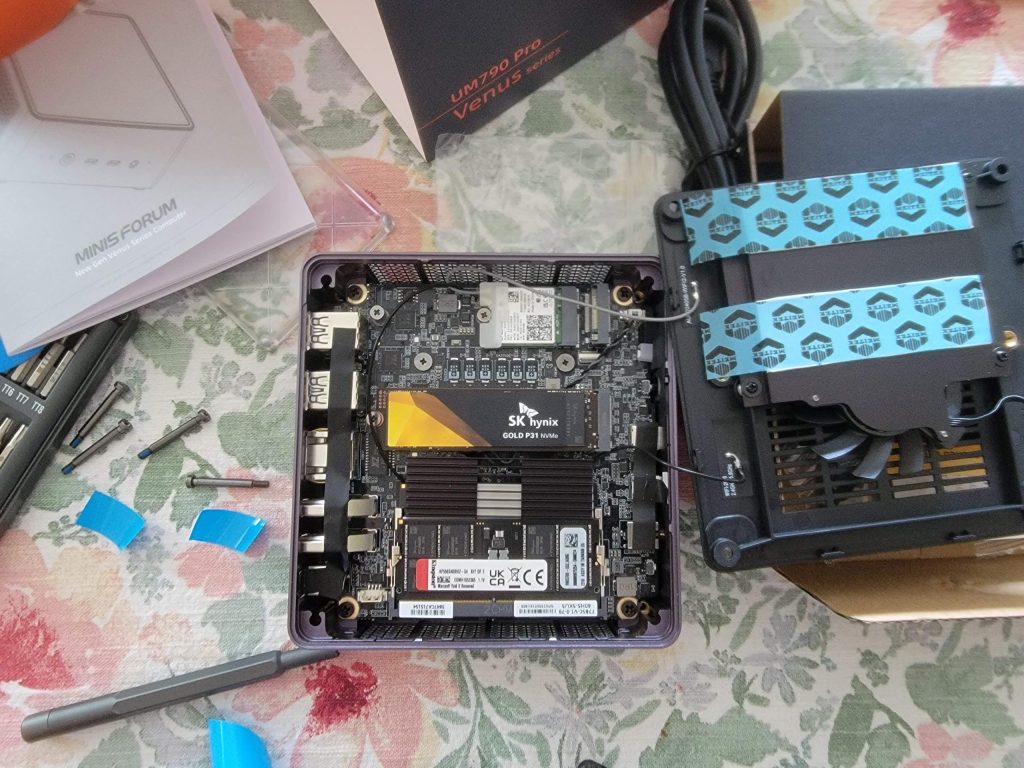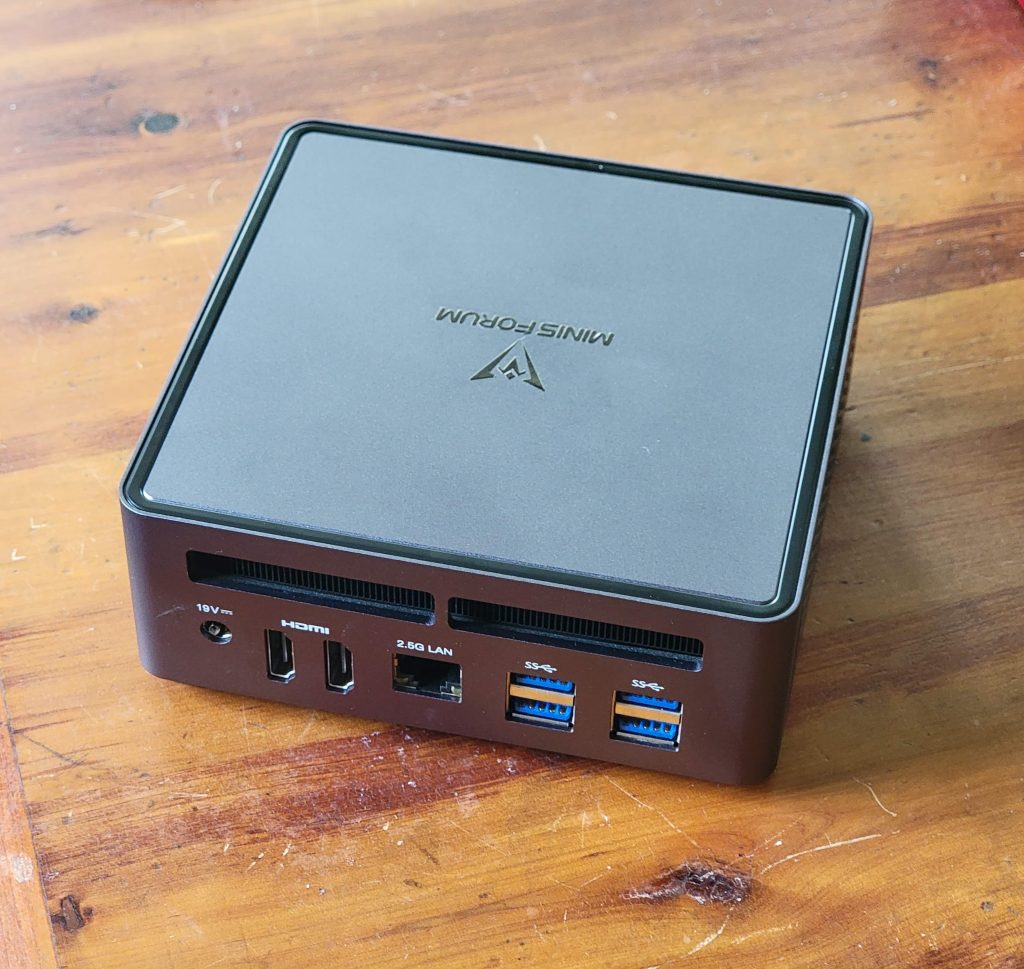As my need to run more model optimization runs for AutoTS continues, I was looking at adding another mini pc to my server setup. If you don’t know, mini PCs are a class of tiny desktop computers that use laptop processors. They don’t have a battery, but the use of laptop processors means they take up less space (are quite portable), are more power efficient, and have better iGPUs than desktop computers (good enough for moderate gaming but not for high end gaming). However they lack the full power and depth of customization (most lack discrete GPU options, which is the main issue for people) of their larger desktop siblings. In general, I highly recommend them for people looking for a computer for non-mobile computing tasks, as they come in all sorts of flavors from cheap to ultra low power to surprisingly powerful. This here is the ‘surprisingly powerful’ kind.
The Minisforum UM790 was my latest pick. Minisforum is a well established maker of mini pcs. They aren’t particularly special, but they tend to build decent products. Mostly I was interested in a PC with the latest generation AMD Zen 4 7940HS processor. This processor adds AVX512 (of interests to me as a data scientist) as well as using TSMC’s N4 node for good power efficiency and good performance. Intel’s current offerings in a mini pc size might be a greater interest to most people right now, but the big/little core setup is not what I need for chunky data science tasks.
I got this UM790 Pro barebones for $520 at release, one of the first Zen 4 mini PCs available. I added 64GB of Kingston Fury RAM at 5600 MHz – a jump up from the not-long-ago standard of DDR5 memory of 4800 MHz. To choose that RAM, I shopped around for 5600 MHz RAM with the best price to CAS latency ratio I could find at the time of purchase. I opted for a SK Hynix P31 Gold 1TB SSD as well – not the fastest SSD (this allows up to PCIE Gen 4) but one I chose based on it being the most power efficient for still very good performance. To my surprise, the UM790 has space for 2 SSDs, both PCIE Gen 4, and they can be setup in a RAID configuration – the first time I have seen this in a mini PC. No hard drive space. My barebones version, however, came with an Intel WiFi 6E WiFi card preinstalled.

As I had the barebones version, I had to open it up to add the RAM and SSD. While not particularly hard, it is a bit trickier than past mini pcs. This is due to the cooling system being more complicated. For example, the trickiest part for me was aligning the heatsink for the RAM (yes, a RAM heatsink, welcome to DDR5). There appear to be two internal fans, one for the CPU and one for the SSD/bottom of the board. All of this extra cooling is worth the nuisance to provide a higher performance and longer lasting product. So far, fan noise has been pretty low, using the standard balanced mode. There’s a likely noisier and less power efficient “performance mode” and there is also the option to reduce turbo boost to put it in an even quieter mode, in BIOS.
I installed OpenSUSE Tumbleweed after Ubuntu 23.04 gave me install failed issues. So far, Tumbleweed with Gnome is pretty good.
I love the feel of the aluminum case, although the appearance is undeniably just a plain black box. The metal case definitely feels more premium than many plastic mini pc cases, and likely helps with cooling. There are plenty of ports, more than I ever really need since I mostly access these remotely. The option to provide USB PD power is nice, although it didn’t seem to like that for powering while installing the OS.
For Geekbench 6 I got scores of 2900 for single core and 14559 with multicore. And this was on Balanced mode, with the fans making very little noise. I expect you could improve on these significantly if you pressed the system. For reference that is significantly better than my workstation PC with a Ryzen 5950X (in eco mode) and significantly better than a Mac M2.

Overall, entirely satisfied with my purchase and looking forward to using it more.

